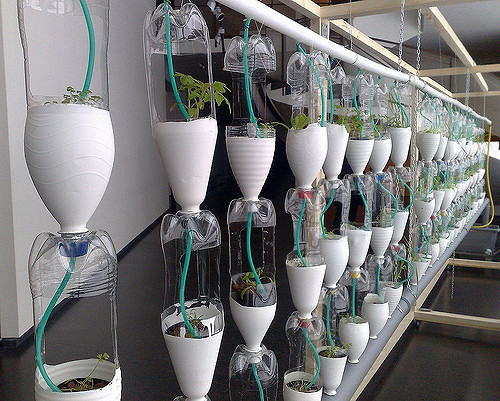

Food packaging testing is used to evaluate any packaging that comes into contact with food products. With the help of food packaging testing, manufacturers can ensure that their food packaging protects food quality and keeps the product free from contamination.
One method of food packaging testing known as compatibility testing is used to evaluate the compatibility of a food packaging material with the food contained inside to ensure product safety and quality. And, as more innovative packaging materials gain popularity in food manufacturing, it’s vital that we evaluate these relatively new materials’ safety rigorously.
In this article, we’ll cover what compatibility testing is, why it’s important, and how it works.
Contents
Key Takeaways:
- Food compatibility testing helps ensure that food packaging and the food contained inside will not undergo adverse chemical reactions.
- Food packaging compatibility testing helps maintain the food product’s quality and safety in order to protect consumers and ensure customer satisfaction.
- Rigorous packaging testing helps ensure that new types of sustainable packaging materials are safe.
What Is Compatibility Testing in Food Packaging?
Compatibility testing for food packaging evaluates the interactions between food packaging and the food itself. The goal is to analyze the active substances of both the packaging and the food to determine:
- Whether the packaging and food undergo adverse chemical reactions
- Whether the package adequately protects the food from spoiling or other changes
Compatibility testing is a crucial step both to keep consumers safe and to ensure that food products retain their taste and quality.
Compatibility testing is used to test a variety of food packaging materials, including glass, aluminum, plastic, and paperboard. Different types of food packaging materials have different chemical and physical properties that make them suitable for different types of food. For example, foods that are acidic can corrode metal packaging, while fats and oils can cause some plastics to warp. All food packaging must maintain the quality of the food, avoid changes in the chemical composition of the food, and prevent any foreign material from entering the packaging. Compatibility testing helps to ensure that the right kind of packaging is paired with the right kind of food in order to achieve these goals.
Some of the most common food packaging compatibility concerns include:
- How much light the food and food packaging is exposed to
- Whether the packaging is reactive (not inert) and may chemically react with food items
- How strong the packaging is and how much of a barrier it provides against gasses, including oxygen, or other substances outside the packaging
- How much moisture and heat the packaging can withstand, and how resistant to corrosion the packaging is
- Other factors
Incompatible packaging and food contents can lead to safety issues, such as spoiled or chemically-contaminated food, and quality issues, such as changes in packaging shape or food color and smell. Choosing the right type of packaging for your food products is an important part of ensuring food safety and quality. Beyond this, compatibility testing helps ensure that the characteristics of the packaging align with the food product in order to maintain the food’s safety and quality.
Different types of packaging have different advantages and disadvantages that make them suitable for different food products.
Testing and Sustainable Packaging
With the growing popularity of sustainable packaging, the industry has witnessed a surge in the use of innovative materials designed to reduce environmental impact. These materials, often derived from renewable sources or boasting biodegradable properties, have ushered in an era of eco-conscious packaging. However, the rise of these novel materials has brought to the forefront an essential concern: ensuring their chemical safety. The innovative nature of sustainable packaging materials demands rigorous safety testing to ascertain that they do not pose health risks or compromise the quality of the packaged products.
Compatibility testing is a critical component of this safety evaluation process. It assesses how sustainable packaging materials interact with the specific contents they encase, such as food, cosmetics, or pharmaceuticals. By subjecting these innovative materials to thorough compatibility testing, manufacturers can not only guarantee the health and well-being of consumers but also reinforce the trust and confidence that consumers place in sustainable packaging as a responsible choice for a greener future.
Importance of Compatibility Testing in Food Packaging
Manufacturers rely on compatibility testing to ensure that their products are safe for consumption and of high quality, which are also crucial factors in ensuring customer satisfaction.
Safety
Chemical reactions between food packaging and food can lead to food products that are dangerous to eat. For example, more acidic foods or beverages may chemically react with metal cans, leading to corrosion that can release harmful chemicals into the food. Certain combinations of packaging materials and food products can increase the risk of migration, the transfer of chemicals between the two, leading to food safety and quality problems. These problems can be exacerbated in certain conditions such as high heat. Compatibility testing helps ensure that adverse chemical reactions are avoided at every stage of the product’s distribution and after sale.
Product Quality
Product quality may be damaged by incompatible packaging and food combinations. Incompatibility can lead to chemical reactions that not only endanger the food’s safety, but also negatively alter its color, taste, or smell. Additionally, incompatibility can lead to problems with the packaging quality such as leaks or deformities.
An adverse reaction between packaging and food products can be extremely costly to manufacturers as well, and they may not even become aware of it until it has already been shipped to retailers (who will refuse to sell damaged packaging or spoiled food, and are unlikely to search through shipments for the ones that aren’t damaged). For some incompatible food and packaging materials combinations, changes to quality may not even occur until the products are already in consumers’ homes. Without preemptive compatibility testing, companies may face recalls that are costly and damaging to brand reputation.
Innovation in Sustainability
Compatibility testing serves as an enabler of innovation in sustainable packaging by fostering safety and reliability. By meticulously assessing how these materials interact with the products they encase, compatibility testing allows manufacturers of sustainable packaging to identify potential risks and fine-tune their packaging solutions. This proactive approach provides the necessary assurance that sustainable packaging innovations meet or exceed safety requirements, thereby bolstering the confidence of both manufacturers and consumers in the ongoing quest for more eco-friendly and secure packaging options.
Compatibility Testing in Food Packaging: How It Works
In a compatibility test, the food packaging is filled with its intended food and exposed to a variety of conditions that simulate storage over time. Commonly, the container is tested at different temperatures over different periods of time in order to detect signs of incompatibility. This may include chemical reactions or physical defects, such as paneling in plastic containers, when the container warps due to a loss of pressure inside the bottle. Tests may also detect leaks or changes to the food quality including hardening or changes in taste, smell, color or moisture content.
While exposure to heat generally accelerates any kind of reaction that may occur over longer periods of time, the exact testing methods used depend on the type of packaging and the food’s unique storage requirements. For example, clear packaging may undergo additional UV testing to detect fading or color changes as a result of UV exposure over time, while dried food’s packaging may be tested specifically for its properties as a moisture barrier. Some packaging types may be exposed to several cycles of testing, including high temperatures (around 120-140 degrees Fahrenheit), below freezing temperatures, and even freeze-thaw cycles. For some types of packaging materials and compatibility testing methods, a full testing procedure can take up to 3 months.
Conclusion
In summary, the surge in sustainable packaging has sparked a crucial need for comprehensive testing, and compatibility testing emerges as a linchpin in this process. As the industry embraces new and eco-conscious materials, the importance of ensuring the safety and reliability of these innovations cannot be overstated. Compatibility testing not only safeguards the integrity of food products but also reinforces the trust consumers place in sustainable packaging. It allows manufacturers to identify potential risks, prevent adverse chemical reactions, and fine-tune packaging solutions for a safer, greener, and more promising future.



